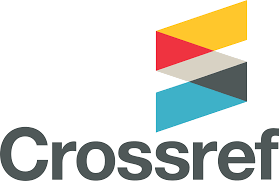Abstract
Research Aims: This study investigates the link between involvement in direct export activities and firm performance, with reference to small and medium-sized enterprises (SMEs) in Indonesia. Design/Methodology/Approach: The study employed primary data collected from questionnaires administered to 271 exporting SMEs in seven provinces in Jawa-Bali Region. The OLS and GLM regression techniques were employed to estimate the export impact model. Research Findings: The results show that export activities bring the highest performance improvement in product quality, moderate improvement in marketing and networking techniques, total sales, total profit, production technique or technology and worker productivity, and least improvement in domestic sales. SMEs' exports-induced performance improvement is positively affected by firm size, owners' education, the presence of foreign investors, and assistance from central government agencies, negatively affected by years of exporting, and shows an inverted U-shaped relationship with export intensity. Theoretical Contribution/Originality: The discourse of firm internationalization theories should not only focus on pre-export activities, but also post-export activities. Further, the discourse on the relationship between firm performance and degree of internationalization should consider non-linear relationship. Managerial Implications in the Southeast Asian Context: SMEs should keep actively participating in the government's export assistance programs in their post-export stage. Especially, exporting SMEs should maintain and strengthen their relationships central government agencies. In order to maintain and expand their export activities, SMEs may consider partnership with foreign investors. Research Limitations and Implications: Future research may investigate the specific export stimuli and export barriers that SMEs encounter in post-export stage. The scope of the study can be expanded to provincial or country comparison in Southeast Asia, taking into account differences in social and economic characteristics, or specified to a particular province/region or product group/industry. Other definitions of SMEs-such as those based on asset or turnover size-might be attempted. Data accuracy may also be improved through the use of factual (quantitative) data to replace some perceptual data used in the current study.
Recommended Citation
Revindo, Mohamad Dian; Gan, Christopher; and Alta, Aditya
(2020)
"Do Export Activities Improve Small Firm Performance? Evidence from Indonesia,"
The South East Asian Journal of Management: Vol. 14:
No.
2, Article 2.
DOI: 10.21002/seam.v14i2.11771
Available at:
https://scholarhub.ui.ac.id/seam/vol14/iss2/2
Included in
Management Information Systems Commons, Management Sciences and Quantitative Methods Commons












